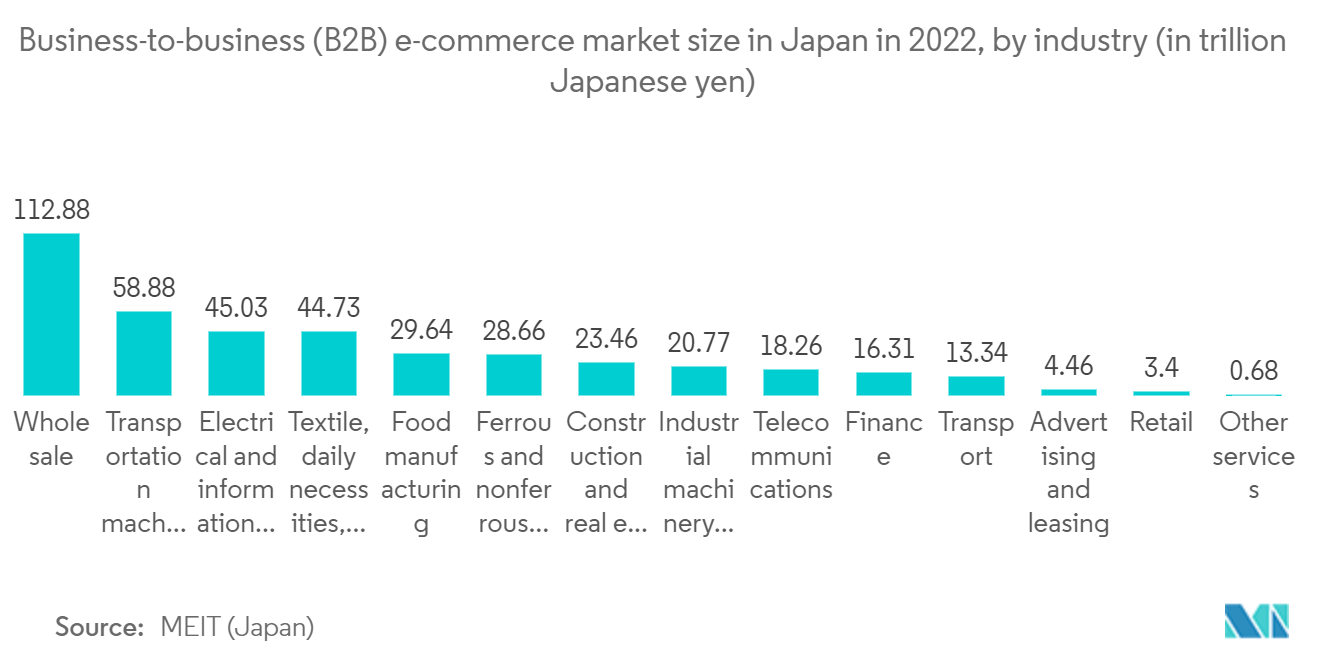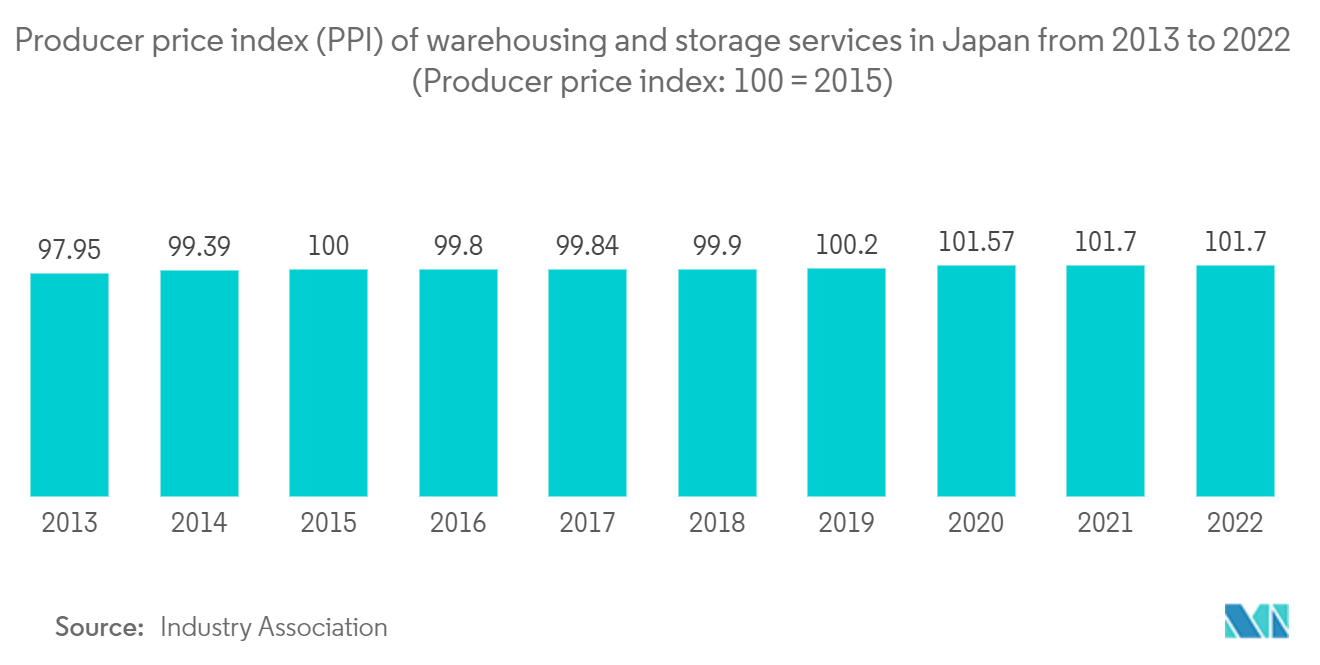Market Trends of Japan Dangerous Goods Logistics Industry
Increasing E-commerce Growth is Contributing to the Demand for Dangerous Goods
- E-commerce platforms offer a much wider variety of products compared to traditional brick-and-mortar stores. This includes a range of items classified as dangerous goods, such as electronics, cosmetics, cleaning products, and medical and laboratory supplies. Consumers expect fast and convenient delivery, which puts pressure on logistics companies to optimize their networks for the transportation of dangerous goods. This can involve dedicated trucks, packaging solutions, and trained personnel.
- Japan's e-commerce market has doubled since 2013 and is expected to continue growing. In 2022, the business-to-consumer (B2C) e-commerce market was valued at JPY 22.7 trillion, which is a 9.9% increase from the previous year. The e-commerce market is driven by Japan's high internet penetration and network infrastructure. The mobile-based app Mercari and re-commerce platforms from major B2C companies like Rakuten, Yahoo Shopping, and Amazon Marketplaces are key players in Japan's e-commerce market. A 2023 survey found that low price is the leading factor influencing the purchase behavior of almost 59% of Japanese consumers.
- The e-commerce sites in Japan offer a vast array of products. It is important to clarify that most dangerous goods are not readily available for purchase online due to strict regulations and safety concerns. However, there are some specific categories where e-commerce does play a role in facilitating the sale of certain dangerous goods. For instance, certain hair dyes, nail polishes, and even some skincare products might contain ingredients regulated as dangerous goods due to flammability or potential health risks.
- As per Volza’s Japan Export data, cleaning product shipments from Japan stood at 19.7K, exported by 1,706 Japanese exporters to 1,995 buyers. Japan exports most of its cleaning products to Vietnam, India, and Turkey. The top three exporters of cleaning products are the United States with 92,558 shipments, followed by Vietnam with 59,477, and China at the third spot with 42,909 shipments.

Increasing Demand for Warehouse Storage Infrastructures is Driving the Market
- Certain dangerous goods, like pharmaceuticals or chemicals, require specific temperature ranges for safe storage. This necessitates dedicated facilities with advanced temperature control systems. Flammable or explosive materials require specially designed warehouses with fire-resistant construction, ventilation systems, and advanced fire suppression technologies.
- Some dangerous goods, like valuable metals or hazardous materials, require enhanced security measures, necessitating warehouses with restricted access, surveillance systems, and robust security protocols.
- In July 2023, Amazon Japan announced that it would establish two new distribution hubs in Japan, one in the city of Chiba and the other in the Saitama Prefecture City of Sayama, both in the greater Tokyo area. Amazon Chiba Minato Fulfillment Center, to be created in the city of Chiba, will be the company's largest robotized hub in Japan, where robots pick up racks and move around. The automated system will help workers and reduce the time spent stocking the shelves and taking items off the racks. It also allows for more space, and the building can apparently stock up to 40% more inventory than conventional warehouses.
- NEC Corporation aims to double the efficiency of autonomous mobile robots (AMRs) deployed in warehouses across Japan by developing a new “risk-sensitive stochastic control technology” that enables them to automatically adjust their speed as they navigate the facility. The company planned to put this technology into practice by March 2024 and have it installed in NEC's cooperative AMRs in the nation. In recent years, the labor shortage has pushed large warehouses in Japan to use robots to transport materials within their facilities. These AMRs are configured to travel with reduced speed to ensure safety, making transport efficiency a challenge.


